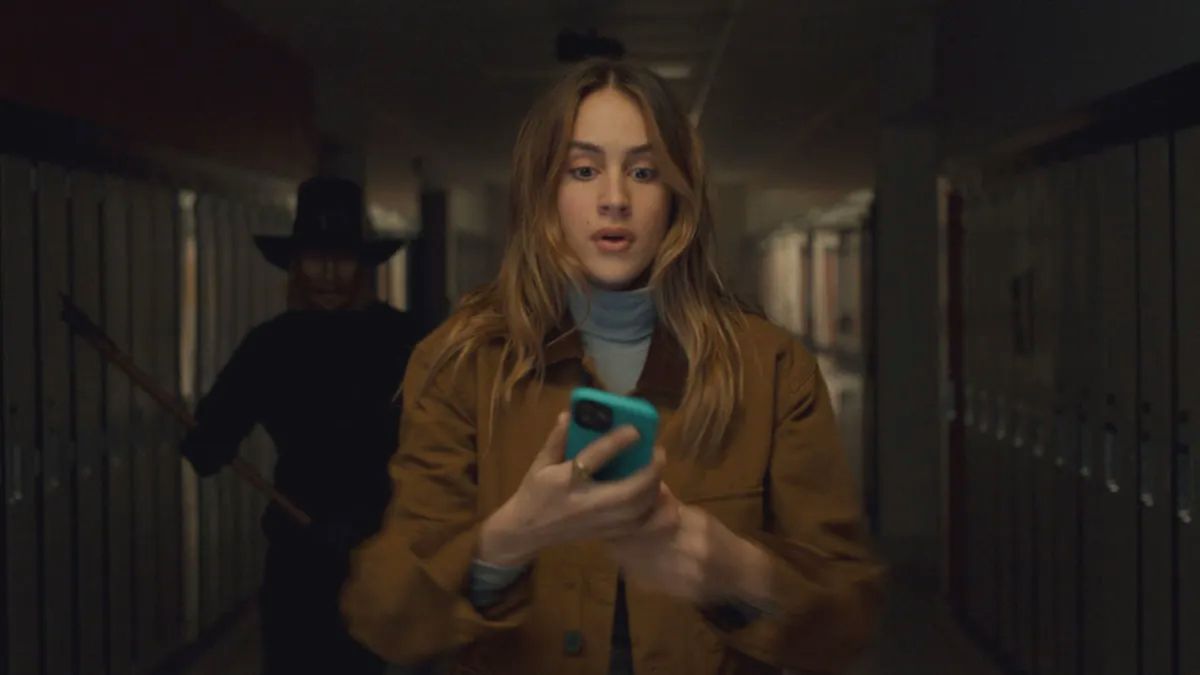“Placenta, Polenta, a Piece of Onion” by Kirby Chen Mages
It was the winter that Ryan and I were squatting in the building on North Avenue in the Old Town neighborhood of Chicago. Actually, we weren’t squatting—we were squatting before, then we were evicted, and now we were paying $240 a month to rent an art studio on Francisco Avenue in a basement that didn’t have a kitchen or a shower. Our landlord lived in the house behind us, so this decision to illegally live in the basement was especially fraught.
To us, the risk of facing yet another eviction was better than the alternative, which was to live with my parents in their South Loop apartment while we figured out our next moves. This was something they had offered and we had refused. My mom is a hoarder and my dad is clinically depressed. I love them, but to live with them would have been to live within their chaos. I had already done this for the first 18 years of my life, thank you very much. They live in a two-bedroom apartment where one bedroom is technically the “guest bedroom/office,” but since my dad tends to work horizontally from his bed or the sofa, and my parents rarely host any guests besides me, the spare room has taken on the role of hoarder’s den. To have lived in that room would have meant living amongst impenetrable walls of stuff. To have lived in that room would have meant caving in.
On the first night we intended to illegally sleep in the art studio, Ryan had a shift at the Second City bar. I was alone and kept hearing the landlord’s footsteps as she passed by our “garden” windows. I imagined her trying to peer inside, wondering what we might be working on so late into the night. If she were able to see inside, she’d see that I was cooking rice and beans on a hot plate. At the end of our block, there was a Burger King that had a breakfast special—two croissant sandwiches for $3. We ate a lot of those.
We hadn’t lived there for very long before I took the pregnancy tests. I felt the need to do so after noticing my breasts were tender; I was hypersensitive to strong smells like cigarette smoke and scrambled eggs; and I had missed my period by several days.
I imagined her trying to peer inside, wondering what we might be working on so late into the night.
In the daytime, the basement’s bathroom was filled with the most enchanting light. I would often sit on the toilet, watching the prisms dance through the brick glass window, which further obscured the outside world. I was always curious what the source of their movement was. Bare branches bouncing, caught in a breeze? Sometimes I’d record this phenomenon with my cellphone camera. I was sitting in that mesmerizing light as I waited for my pregnancy test results. Like they do in the movies, I took two tests to be sure.
We slept on a futon on the floor. Each morning we would roll up the mattress and hide it in the studio closet. The mattress was still unrolled, and we were sitting in bed, when I called a clinic to schedule my abortion. I was given two choices—take pills at home for a self-induced abortion, which they suggested I have a bathtub for—I didn’t even have a shower—or come in for the procedure. Over the phone, the receptionist asked me if I remembered the date of the last time I had sex. I did. She wanted to make sure the abortion was scheduled with enough time between conception and the surgical procedure.
Ryan came with me to the clinic on North & LaSalle, which was also in a basement. In the waiting room, there were two middle-aged women sitting across from us. They looked very Midwestern. Milky white, big-boned, and blond. They sat still, their faces hidden behind magazines. Both of them had large duffel bags stowed underneath their chairs. I found myself becoming paranoid that they could be Christian zealots with bombs in their bags. There was no rationale for me to be suspicious of them, which made me feel guilty for imposing my own fear onto bystanders. Or not even bystanders—two women sitting in a clinic, probably wishing, same as me, that they could be anywhere else. A much more likely scenario was that they had duffel bags with them because they had to travel from another state or town to get an abortion—either for themselves or a loved one who might have been in the operation room at the very moment that I sat there judging them.
To prepare for a surgical abortion, one is advised not to eat for six hours prior to the procedure. In the waiting room, a male companion to a female patient arrived with a plastic bag in hand. He sat down beside her, fumbled around in the bag, then pulled out a paper-wrapped submarine sandwich. As he unwrapped the sub, the odor of marinara sauce and meatballs filled the confined, windowless space. A waiting room full of starving patients staring at this man’s meatball sub. I inhaled and felt my stomach gurgle and growl. A receptionist came out into the room and told the man, “No food allowed.” He begrudgingly wrapped up his sandwich. After she departed, he unwrapped it again and took another bite.
I was called into a room for the procedure. Two nurses, who seemed much younger than me, informed me that first they were going to examine my uterus with an ultrasound. They told me I could choose whether to look at the screen. I chose not to look. There was silence as one nurse inserted the probe into my vagina and moved it around, while the other nurse monitored the screen. I looked at the nurses. They both seemed concerned. With hesitancy and downcast eyes, one of the nurses told me, “Based on what we see on the screen, it’s too early for the procedure. You’ll need to reschedule and come back, but you’ll still need to pay for today’s appointment.”
I found myself becoming paranoid that they could be Christian zealots with bombs in their bags.
The cost of the appointment was $150. Earlier that week, Ryan and I had to scrounge up the $500 for the abortion—and by scrounge up, I mean we paid off enough of our credit card debt to make room for another charge on the card. This additional $150 would put us over our limit and ruin everything.
I stood in a closet-sized office space with one dim lamplight as a receptionist tried to explain to me why I had to pay for that day’s visit, as I complained to her that the clinic was the one who had scheduled my appointment for this date. I tried to argue that I shouldn’t have to pay for their error, even though the last thing I really wanted to do was make an underfunded clinic pay for anything. She was apologetic but adamant that I pay, and so eventually I did, and we rescheduled.
I sometimes wonder if what the nurses saw on the screen was a deformed fetus. The truth is, prior to my appointment, I had already been trying to kill the embryo. I suppose I was angry at it, and to take revenge I’d been drinking glasses of cheap red wine each night and punching my stomach with my fists until my belly and my hands were sore. Ryan knew that this was going on, but since he was working at the bar, and I was pretty drunk by the time he came home, I’d tell him about it like it was a joke. Like I thought what I was doing was funny. And since I told it like it was some kind of “dead baby joke”—laughing—he laughed too.
In retrospect, I know that it wasn’t very funny. More recently, I grieve.
Between the time I didn’t have the abortion and the upcoming date of my newly scheduled abortion, I started to bleed. A lot. I was frightened as the blood kept flowing and my uterus wouldn’t cease cramping. As I laid on my side in a fetal position, I realized that I must be having a miscarriage and googled the symptoms to be sure. What I could have done at that moment was ask for help, but I didn’t. This was all happening in that aforementioned hoarder’s den within my parents’ apartment, where Ryan and I had succumbed to staying one especially cold winter night. I laid there bleeding uncontrollably, while my mom was in the other room. We were only separated by a wall. In the morning, the cramping and bleeding persisted but had lessened. Freshly bathed and fed, Ryan and I headed back to our studio.
Ryan and I had to scrounge up the $500 for the abortion.
In the following days, I wore diaper-like pads, took ibuprofen, and went about my routine: laying low in the basement studio, trying to stay warm with a space heater in a Chicago winter.
Since our studio didn’t have internet, Ryan and I would often use the wifi at Atomix Cafe—a coffee shop frequented by people who needed a place to linger. We’d buy a bottomless mug of coffee for $4 and stay for hours. While sitting in the cafe during the days of my miscarriage, I experienced some sudden cramping and the onset of a diarrheal emergency. I rushed to the bathroom to release my bowels and vaginal canal. When I looked down into the toilet bowl, I was surprised to see what at first I thought to be a very large piece of onion. It was only as I flushed that I realized what I had actually just seen. It was not a piece of onion. It was my placenta.
I exited the bathroom and approached Ryan.
“What’s wrong?” He asked.
“I think I just flushed the baby down the toilet.”
Five years later, Ryan and I get married. We don’t intend to have children. We never discuss the miscarriage directly, but occasionally we make jokes when we’re cooking with onions. Ryan will say, “You thought our baby was a piece of onion!” And then we laugh. He never gets to know how scared I was, because I never tell him. And he never asks, because he never asks.
I was frightened as the blood kept flowing and my uterus wouldn’t cease cramping.
A few months after our wedding, I’m visiting my friend Marisa at her home in Tucson. She’s cooking us dinner—Marcella Hazan’s cult classic tomato sauce, served over a creamy bowl of polenta. The secret to Marcella’s sauce is an onion. You slice a whole onion in half and let the halves simmer with two cups of canned tomatoes, five tablespoons of butter, and a pinch of salt. After simmering for an hour, you’re supposed to remove the two onion halves from the sauce and discard them, which always seems like a waste as they’ve become so delectably softened in the simmering process. When I make the sauce at home, I usually blend the onion into the sauce until it disappears, or I put it in a container to save for later use.
When Marisa invites me to the dining table, she’s plated two bowls of polenta with Marcella’s sauce on top, along with a garnish of one translucent piece of onion per bowl.
I sit there staring at my bowl as Marisa giggles. She prods at the piece of onion with her fork.
“It kind of looks like a placenta!” she remarks.
She continues to giggle and prod before exclaiming, “Placenta polenta!”
Looking down at the piece of onion in the shallow pasta bowl, I thought I might vomit. I kept this nausea to myself. I felt alone, trapped in a tunnel that transported me back to the Atomix Cafe. From pasta bowl to toilet bowl. A red mess. In that moment, I felt both deeply rooted in my body and far, far away. Speechless and immobile. What I wish is that I had used Marisa’s joke as an opening into a conversation about my experience rather than keeping it held inside. I’ve often wondered why I didn’t tell Marisa. Why I felt the need to navigate the troubling memory on my own.
Somehow, I was trained for silence. When I started menstruating, I couldn’t even verbalize it to my mom. I wrote it out on a piece of paper: “I got my period.” Then slid the message to her across the kitchen counter. This moment with Marisa felt similar. Containment and an internalization. A going inwards.
I felt both deeply rooted in my body and far, far away.
Imagine if I had told Marisa in the moment of her placenta joke, “You know, it’s funny you say that, because I can tell you from actual experience that the placenta does in fact look like a piece of onion once expelled from the body.” Imagine I’m able to tell her why I know this. And then, imagine she says, “I’m sorry. I had no idea. I wish you could have told me.” And I say, “Me too.”
Imagine if I had told my mom I was having a miscarriage while in her presence, on that winter night when I was sleeping over because it was too cold to stay at the studio. Imagine if I had told my mom and she surprised me with understanding. Surprised me with care. Surprised me with the knowledge I didn’t have on my own. The knowledge she possessed because she herself had a miscarriage (something I would only find out later). Imagine if I had told her and she said that I need to see a doctor. Just to be safe. Imagine that I could feel safe going to a doctor. Imagine that we didn’t need health insurance to receive affordable healthcare. Imagine that barrier is non-existent. And so, I, uninsured, go to the doctor and this gives me assurance.
It feels safe to keep this story to myself, but now more than ever, I want to share it openly—with my mom, with Marisa, with everyone. It’s a story that feels neither monumental nor minimal—just very much a part of my life. My lived experience of briefly carrying another potential life. My experience of that potential life leaving my body.







